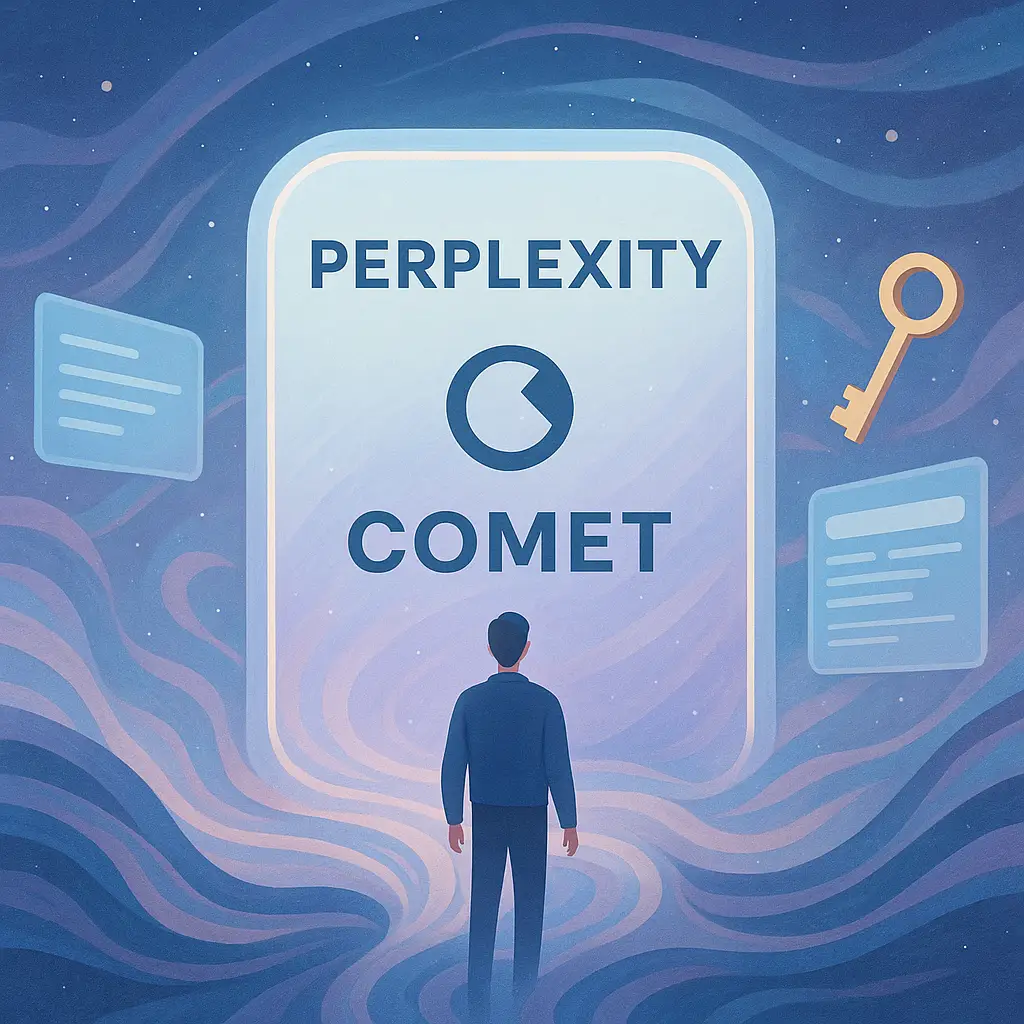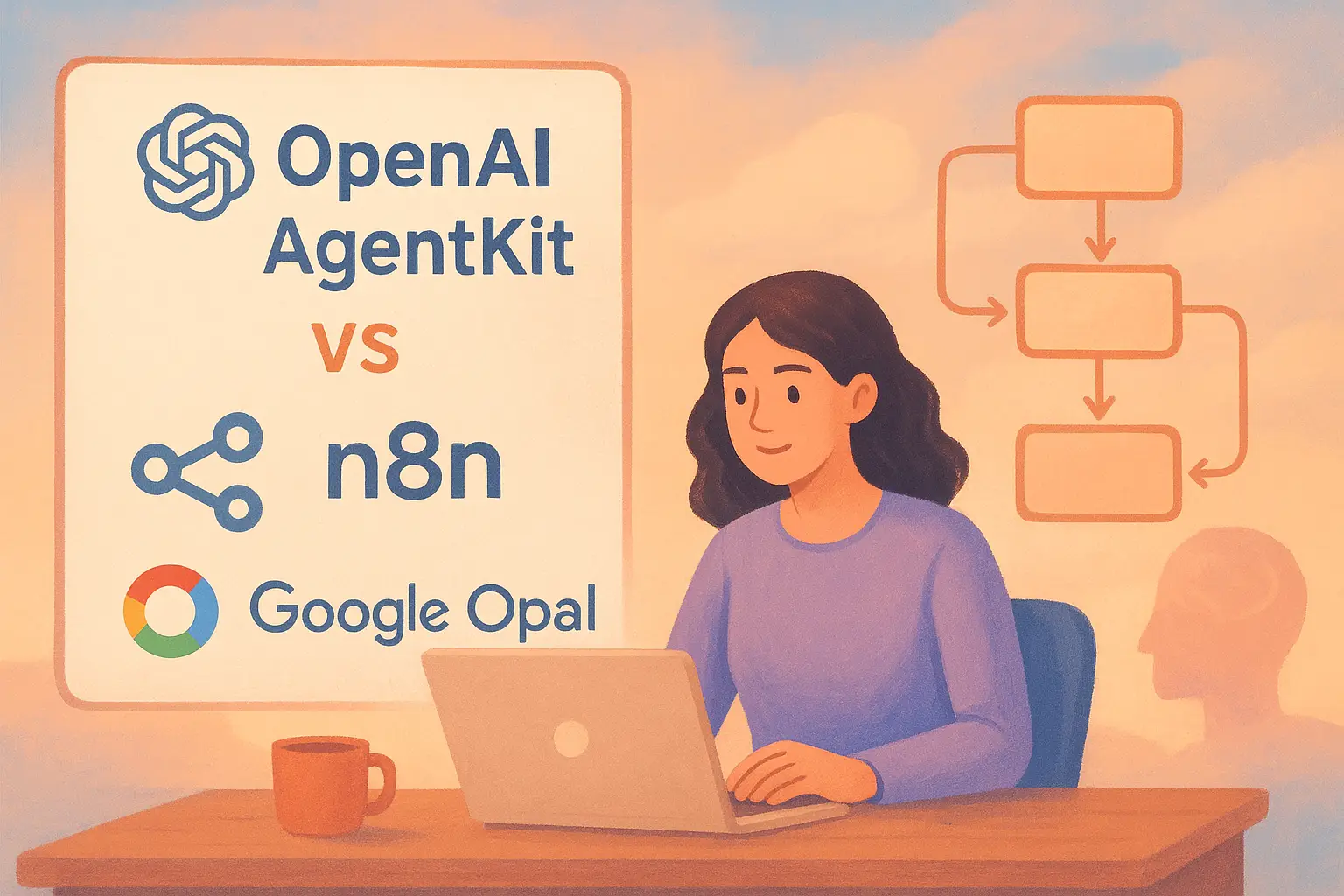
Google Sheets + n8n: Setup Guide
Table of Contents
- Introduction
- Understanding n8n and Its Google Sheets Node
- Step 1: Creating a Google Cloud Project
- Step 2: Enabling the Google Sheets API
- Step 3: Configuring the OAuth Consent Screen
- Step 4: Generating OAuth 2.0 Client Credentials
- Step 5: Integrating Google Sheets in n8n
- Troubleshooting and Common Pitfalls
- Advanced Tips and Best Practices
- Real-World Applications and Community Insights
- Conclusion
- Frequently Asked Questions (FAQs)
Introduction
n8n stands out as an impressive open-source workflow automation tool. It connects the dots between multiple services smoothly, unlocking the potential to automate mundane tasks, integrate applications, and streamline data processing. Among its various nodes, the Google Sheets node enjoys significant popularity because of how often businesses and hobbyists use Google Sheets as a data management hub.
This article serves as a detailed guide on setting up the Google Sheets node in n8n. Whether you're a small business owner, a developer, or an automation enthusiast, this step-by-step guide explains how to leverage Google’s OAuth 2.0 credentials for a smooth integration. I’ll walk you through the entire process—from creating a Google Cloud project to configuring OAuth credentials, and finally incorporating these details into your n8n workflows.
Expect to encounter plenty of practical examples, tables, lists, troubleshooting tips, and external links to documentation and video tutorials that can enhance your understanding of the subject. Let's dive in!
Automate with n8n
Build workflows that save time and scale your work. Start free. Grow as you go.
Start Free with n8nUnderstanding n8n and Its Google Sheets Node
Before we get into the step-by-step setup, it’s important to understand why n8n and the integration with Google Sheets are worth your time.
What is n8n?
n8n is an extendable workflow automation tool designed to orchestrate integrated tasks across various platforms. Unlike proprietary tools, n8n provides complete control over workflows while preserving flexibility and transparency. It is a great alternative to other automation platforms because you can host it yourself, customize it, and create very specific integrations without vendor lock-in.
Why Google Sheets?
Google Sheets has become a trusted tool for many because it’s free to use, highly collaborative, and accessible from anywhere. Automating tasks in Google Sheets means you can append data, sync information, generate reports, or even manage your to-do lists programmatically. When paired with n8n, Google Sheets becomes even more powerful. You can reduce manual effort, increase accuracy, and maintain a seamless flow of information between multiple services.
How the Google Sheets Node Works in n8n
The Google Sheets node in n8n allows you to perform a variety of operations such as:
- Appending new rows to a spreadsheet.
- Updating existing entries.
- Retrieving data from a specific sheet.
- Managing multiple sheets within a document.
By leveraging these functionalities, you can automate a wide range of everyday tasks, ensuring that data flows smoothly between your systems.
Step 1: Creating a Google Cloud Project
The first step in setting up the Google Sheets node involves creating a project in the Google Cloud Console. This project acts as a container for all your related APIs and credentials, making it easier to manage and secure.
Detailed Steps for Creating a Project
-
Sign-In and Navigation:
Log in to the Google Cloud Console. If you are new to Google Cloud, follow the prompts to set up your account. -
Creating the New Project:
- In the top navigation bar, click on the project drop-down.
- Select "New Project."
- Provide a name like “n8n-GoogleSheets-Integration” to easily reference the project later.
- Optionally, choose or create an organization if you’re setting this up for business purposes.
- Click "Create" and allow a few moments for the project environment to be set up.
Why Creating a Project Is Important
A dedicated project keeps your resources organized and ensures that API usage, costs, and permissions are isolated from other projects you might run on Google Cloud. It also makes credential management much easier. You can return to this project anytime to update APIs, check usage statistics, or modify settings.
Step 2: Enabling the Google Sheets API
After setting up your Google Cloud project, the next step is to enable the Google Sheets API. This step is crucial because it ensures that your project can interact with Google Sheets effectively.
How to Enable the API
-
Navigate to the APIs & Services Section:
Once your project is created, click on “APIs & Services” in the left-hand menu and select “Library.” -
Search for “Google Sheets API”:
Use the search bar to find the Google Sheets API. Click on the result to access more details about it. -
Enable the API:
Click the “Enable” button to allow your project to use the API.
Optionally, if your workflow requires handling file operations or managing spreadsheet permissions, you might also enable the “Google Drive API.”
Table: API Enabling Process
| Action | Description | Note |
|---|---|---|
| Navigate to API Library | Within Google Cloud Console, find the library of APIs | Use left-hand menu for faster access |
| Search for Google Sheets API | Type in “Google Sheets API” | Ensure proper spelling |
| Click Enable | Activates the API for your current project | May require additional permissions later |
Step 3: Configuring the OAuth Consent Screen
The OAuth consent screen serves as a gatekeeper for user information and data access. Configuring it correctly ensures that when you connect your Google account to n8n, you are doing so securely.
Steps in the OAuth Consent Screen Setup
-
Access the OAuth Consent Screen Section:
Go to “APIs & Services” -> “OAuth consent screen” in your Google Cloud Console. -
Select User Type:
You will be prompted to select whether your application will be used by “External” users (any Google account) or “Internal” users (restricted to your organization). For most n8n setups, “External” is the typical choice. -
Fill Out Application Details:
- App Name: Use a descriptive name like “n8n Google Sheets Integration.”
- User Support Email: Add an email where users can contact you.
- Developer Contact Information: Provide your email address.
- You may also add logos or additional details if desired, but keep it simple to start.
- Test Users: Under the test users section, add any Google accounts that will be used to test the integration.
-
Save and Continue:
After filling out the required fields, click “Save and Continue.” No submission for verification is necessary until you move to production usage.
Key Considerations
It’s essential to fill this section out thoroughly to avoid delays or authorization issues later. Google may reject requests if the application details are sketchy or incomplete.
Step 4: Generating OAuth 2.0 Client Credentials
Now that the project and OAuth consent screen are configured, you need to generate the OAuth 2.0 client credentials. These credentials allow n8n to authenticate with Google and perform actions on your behalf.
Detailed Process for Creating Client Credentials
-
Navigate to Credentials:
In the “APIs & Services” section, click on “Credentials.” -
Create New Credentials:
- Click the “Create Credentials” button and choose “OAuth client ID.”
- Select “Web application” as the application type.
-
Configure the Credential:
- Provide a clear name for the client, like “n8n-GoogleSheets-Client.”
- Authorized Redirect URIs: Initially, leave this blank. Later, you will add n8n’s redirect URI.
- Click “Create.”
-
Copy Your Client ID and Client Secret:
Once created, a dialog will display your Client ID and Client Secret. Copy these values as you will need them later in n8n.
Table: OAuth Credentials Overview
| Credential Component | Purpose | Important Note |
|---|---|---|
| Client ID | Unique identifier for your application | Keep this value secure |
| Client Secret | Secret key for authenticating your requests | Do not expose this; store safely |
| Redirect URIs | URLs allowed to receive responses from Google during auth | Must match exactly in n8n configuration |
Securing Your Credentials
It’s important to keep your Client Secret private. Only share these details with services that need them (in this case, n8n). If the delicate balance of security is disturbed, you might face data breaches or unauthorized access.
Step 5: Integrating Google Sheets in n8n
With your OAuth credentials at hand, the next task is to integrate Google Sheets with n8n. This section explains how to set up your n8n workflow to communicate with your Google Cloud project effectively.
Integrating Credentials into n8n
-
Login to Your n8n Dashboard:
Open your n8n instance. If you are unfamiliar with n8n, follow the n8n documentation for installation and initial configuration. -
Create or Open a Workflow:
- Click “Create Workflow” to start a new automation.
- Alternatively, open an existing workflow if you want to add the Google Sheets integration to it.
-
Add the Google Sheets Node:
- Click the “+” icon on the canvas.
- Choose the “Google Sheets” node from the list.
- Drag and drop the node onto the workflow canvas.
-
Set Up Credentials in the Node:
- In the node configuration panel, click on “Credential to connect with” and select “Create new credential.”
- Opt for “OAuth 2.0” as the authentication method.
- Paste your previously copied Client ID and Client Secret into the appropriate fields.
-
Configure the OAuth Redirect URI:
- n8n will display an OAuth Redirect URI. Copy this URL.
- Go back to your Google Cloud Console and edit your OAuth client settings.
- Under “Authorized Redirect URIs,” add the n8n redirect URI and click “Save.”
-
Authorize the Connection:
- In n8n, click “Save” on the credential configuration screen.
- Next, click “Sign in with Google.” A new window or tab will open asking you to log in and grant permissions.
- After authorization, you will be redirected back to your n8n instance, confirming the connection.
-
Choose an Operation:
- With the connection established, choose the specific operation you want to perform. Options typically include:
- Append or update rows
- Get specific sheet data
- Create new spreadsheets
- Configure the node parameters such as spreadsheet ID, sheet name, range of cells, etc.
- With the connection established, choose the specific operation you want to perform. Options typically include:
Example List: Common Operations in the Google Sheets Node
- Append new data to the bottom of a sheet.
- Update a cell range with fresh data.
- Retrieve data from a specific range for analysis.
- Create a new sheet within an existing spreadsheet.
Each operation has its own requirements. For instance, when appending rows, make sure your Google Sheets document allows edits by the Google account used for authentication.
Using Tables for Clarity
Below is a quick reference table that summarizes the configuration steps in n8n:
| n8n Configuration Step | Description | Reminder |
|---|---|---|
| Create Workflow | Start new automation in n8n instance | Can integrate with other nodes |
| Add Google Sheets Node | Drag the node onto the canvas | Available under “Built-in Nodes” |
| Set Up OAuth 2.0 Credentials | Enter Client ID and Client Secret | Check for typos or missing characters |
| Configure Redirect URI | Copy n8n’s provided URL to Google Cloud settings | Must be an exact match |
| Authorize Connection | Complete OAuth login and grant permissions | Confirm successful redirection |
Using this table can help you quickly revise the process if you run into any issues later.
Troubleshooting and Common Pitfalls
Even a well-documented process can encounter hiccups along the way. Let’s discuss common problems and how to solve them.
1. Redirect URI Mismatch
One of the most frequent errors you might face is a redirect URI mismatch. This occurs when the OAuth Redirect URI in your n8n configuration does not exactly match what is registered in Google Cloud.
- Solution:
Double-check the URL in n8n’s OAuth credentials and copy it exactly into the Google Cloud Console’s “Authorized Redirect URIs” field. Any extra characters or missing parts can cause a failure.
2. API Not Enabled
Sometimes, even after creating the project, you might forget to enable the Google Sheets API (or the optional Google Drive API).
- Solution:
Return to the API Library in Google Cloud Console and verify that the Google Sheets API is enabled for your project. If not, click “Enable.”
3. Insufficient Permissions
Your Google account must have the necessary access rights to the specified spreadsheet. If the permissions are set to read-only, your workflow might fail when trying to update data.
- Solution:
Check the sharing settings of your Google Sheet. Ensure that the account used in the OAuth process has editing rights.
4. OAuth Consent Screen Delays
Sometimes changes on the OAuth consent screen or the addition of new test users can take some time to propagate.
- Solution:
Wait for a short period and try re-authorizing. If delays persist, revisit the OAuth consent screen configuration for any missing details.
5. Handling Large Datasets
If your workflow involves large datasets, you might experience performance issues or API limitations.
- Solution:
Consider breaking your data into smaller batches. Use pagination in your workflow to prevent overload and ensure smoother processing.
Table: Troubleshooting Quick Fixes
| Issue | Common Cause | Quick Fix |
|---|---|---|
| Redirect URI Mismatch | Inexact URL match | Verify and copy the exact URL from n8n |
| API Not Enabled | Oversight in setting up Google Cloud project | Enable the API via Google Cloud Console |
| Insufficient Permissions | Account lacking edit rights on the sheet | Update Google Sheet sharing settings |
| OAuth Consent Delay | Changes taking time to propagate | Wait and verify settings again |
| Data Overload | Too many rows or large data volume in one operation | Use batch processing or pagination |
By referring to this quick aid chart, you can resolve the most recurring issues effectively.
Advanced Tips and Best Practices
Once your basic setup is complete, you might want to optimize your workflows for better performance and reliability. Here are some tips based on my experience and community inputs:
Customize and Organize Your Workflows
-
Group related nodes together:
When your workflow becomes complex, structure it into sub-workflows or group nodes with similar functions. This makes maintenance much easier. -
Use naming conventions:
Name your nodes and workflows descriptively. For example, instead of “Node 1” or “Sheets Operation,” try something like “Update Sales Data - Jan 2023.” Clear names save time in debugging and collaboration.
Handling Errors Gracefully
-
Implement Error Handling:
Use n8n’s built-in error trap nodes. This way, if an API call fails, you can send a notification, log the error, or attempt a retry automatically. -
Check API Rate Limits:
Google APIs enforce quotas. If your workflow is intensive, consider using delay nodes and error handling to avoid exceeding limits.
Data Security
-
Keep Credentials Secure:
Store your client secrets in a secure vault if possible. Avoid hardcoding sensitive details in public or shared workflows. -
Regular Reviews:
Periodically review your OAuth consent settings and API usage logs in Google Cloud Console to ensure no unauthorized access occurs.
Testing and Debugging
-
Run in Test Mode:
Before deploying any workflow into production, test it with a small dataset at first. This reduces risks and helps catch mistakes early. -
Enable Logging:
n8n provides logging capabilities that can be useful for tracking the flow of data and pinpointing where failures occur. Check logs regularly.
Incorporating Community and External Resources
-
Read the Documentation Regularly:
The n8n Documentation for the Google Sheets Node is updated with new tips and troubleshooting steps. -
Join the Community:
The n8n forum and community channels are treasure troves of user experiences. They often reveal clever workarounds or solutions that are not immediately obvious in the documentation. -
Watch Video Tutorials:
Video guides, such as Archit Jain’s detailed walkthroughs shared on X, provide visual insights that complement the written instructions.
Real-World Applications and Community Insights
The integration of Google Sheets with n8n is not merely a fun technical exercise; it serves real business needs. Let’s take a look at a few scenarios where this integration shines:
Scenario 1: Automated Sales Reporting
Imagine you run a small e-commerce business. Every day, your online store collects sales data that must be compiled into a report. Manually transferring this data into a Google Sheets report is time-consuming and prone to errors.
By setting up an n8n workflow with the Google Sheets node, you can automatically:
- Fetch daily sales data from your e-commerce platform.
- Use a Google Sheets node to append new rows to a pre-formatted sales report spreadsheet.
- Trigger email notifications with updated reports for your team.
Scenario 2: Inventory Management
For businesses that maintain physical or digital inventory, real-time updates are essential. Suppose you manage inventory levels in a Google Sheet and need to update it whenever sales occur or stock is replenished.
An n8n workflow can be created to:
- Monitor sales events.
- Update cell ranges in Google Sheets to reflect new inventory counts.
- Alert the team when inventory levels drop below a threshold.
Scenario 3: Data Migration and Consolidation
Many organizations use multiple platforms to collect data. You might have different systems feeding into various spreadsheets. The Google Sheets node in n8n can:
- Pull data from separate sources.
- Consolidate and clean the data into one master spreadsheet.
- Create visual dashboards or trigger further data analysis tasks.
Community Contributions
Numerous community users have shared impressive ways to integrate Google Sheets with n8n. For instance:
- A user developed a workflow that automatically logs customer support ticket metrics into a shared Google Sheet.
- Another community member set up a provisioning system where new entries on a registration form are instantly added to a Google Sheet, feeding into an onboarding process.
These real-world examples underscore how simple integrations can lead to robust automated systems.
Conclusion
Setting up the Google Sheets node in n8n is an enriching process that not only simplifies data management but also boosts overall workflow efficiency. This guide has walked you through every necessary step: from creating your Google Cloud project and enabling the required APIs to configuring the OAuth consent screen, generating client credentials, and finally integrating everything into your n8n workflow.
Remember, automation is a potent tool to streamline repetitive tasks and reduce manual errors. With the knowledge shared in this guide, you are well-equipped to harness the power of n8n’s Google Sheets node in your projects. Enjoy customizing your workflow, and don’t hesitate to explore more advanced techniques and community-shared hacks to maximize your setup.
For more details, refer to:
- The official n8n Documentation.
- Video tutorials by Archit Jain on X.
- Helpful threads on the n8n Community Forum.
Take the time to experiment. As with any tool, the real magic happens when you combine creativity with technical know-how. Happy automating!
By following this guide, you now have a comprehensive understanding of how to set up the Google Sheets node in n8n. From grasping the basics of n8n and Google Sheets to tackling common pitfalls and optimizing your workflow, every step comes together to empower you with a robust automation solution. Enjoy the process, and may your data flow seamlessly from one service to another!
Frequently Asked Questions
Share this article
Related Articles

Comet Invite: 1-Month Free Perplexity Pro
Discover how to secure a guaranteed invite to Comet with free 1-month access to Perplexity Pro without a waitlist or credit card. Your comprehensive guide to the next generation in AI-powered browsing.

Earn Money with Comet India: 12 Tips
Discover effective strategies to earn money using Comet in India. This guide covers 12 hidden automation techniques, real-user tactics, and essential insights for pro users.

AgentKit vs n8n vs Opal: AI Tools 2025
Explore why OpenAI AgentKit outperforms alternatives like n8n and Google Opal, transforming AI automation workflows for modern agentic applications in 2025.
